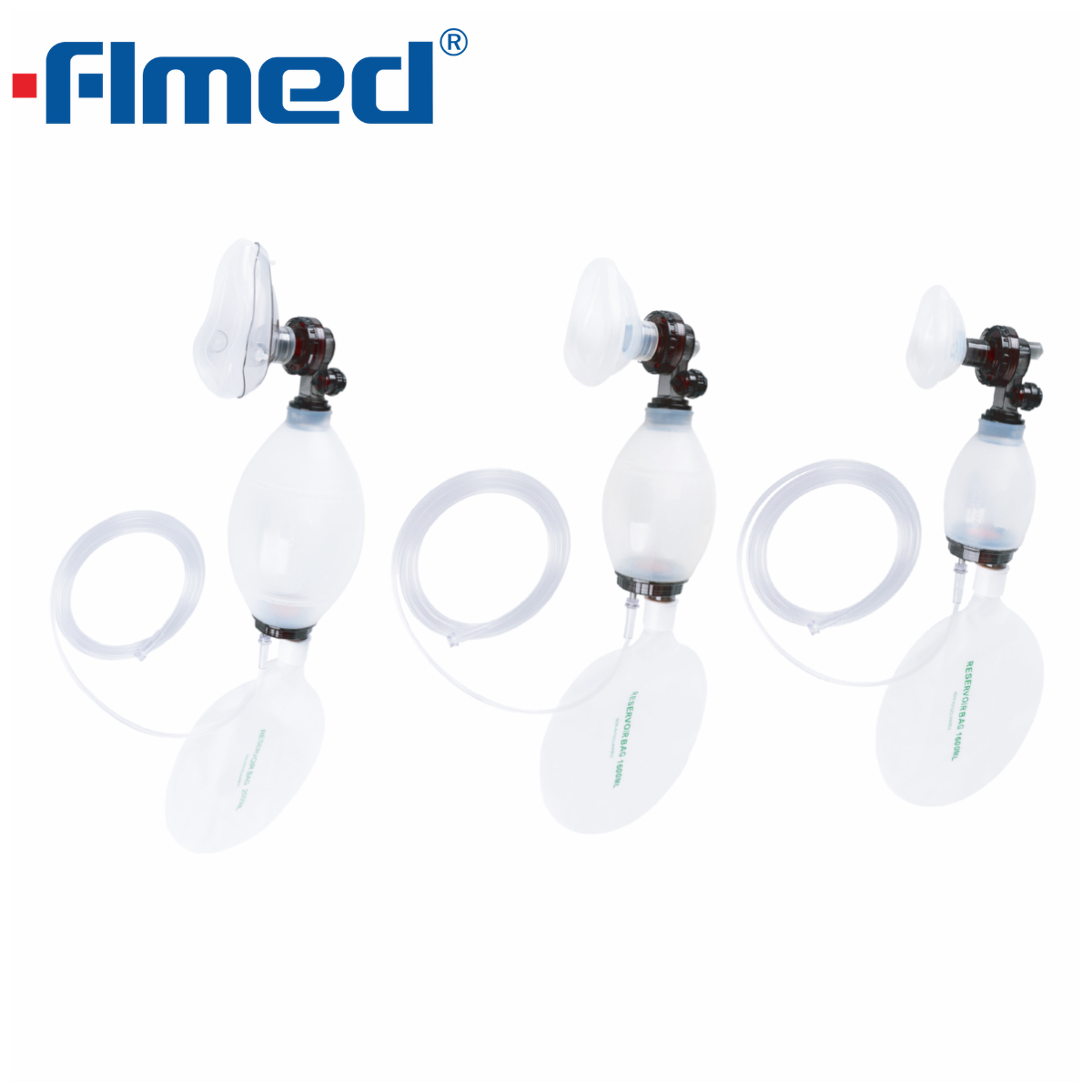A manual resuscitator, commonly known as a bag-valve-mask (BVM) or Ambu bag, is a crucial medical device used to provide positive pressure ventilation to adult patients in emergency situations. Proper usage of this device is essential for delivering effective respiratory support and increasing the chances of a patient's survival. In this article, we will guide you through the steps of using an adult manual resuscitator, including its key components, preparation, and the ventilation process.
Understanding the Adult Manual Resuscitator
1. Components of the Resuscitator
An adult manual resuscitator typically consists of the following components:
Self-Expanding Bag: The bag is the core of the resuscitator, which is squeezed to deliver positive pressure ventilation to the patient.
Unidirectional Valves: These valves ensure that air flows only from the bag to the patient and prevents backflow.
Facial Mask: The mask creates a seal over the patient's nose and mouth to facilitate efficient ventilation.
Oxygen Inlet Port: The resuscitator is connected to an oxygen source, such as an oxygen tank or wall outlet, to provide oxygen-enriched ventilation.
2. Selecting the Right Size
Ensure that you have the appropriate size of the resuscitator bag and mask for an adult patient. Proper sizing is crucial to create an effective seal over the patient's face and ensure efficient ventilation.
Using the Adult Manual Resuscitator
1. Preparation
Before using the resuscitator, perform the following preparatory steps:
Position the Patient: Place the patient on a firm surface with their head slightly tilted backward.
Ensure a Clear Airway: Make sure the patient's airway is clear of any obstructions, such as mucus or foreign objects.
Connect to Oxygen Source: Attach the resuscitator to an oxygen source via the oxygen inlet port.
2. Ventilation Process
To provide positive pressure ventilation using the manual resuscitator, follow these steps:
Place the Mask: Position the mask over the patient's nose and mouth, creating a seal to prevent air leakage.
Squeeze the Bag: Compress the self-expanding bag firmly and steadily. This action delivers a breath of air into the patient's lungs. The bag should be squeezed until the patient's chest rises visibly, indicating adequate ventilation.
Release the Bag: Allow the bag to fully reinflate between breaths. This is important to prevent excessive lung inflation and barotrauma.
Repeat Ventilation: Continue the process of squeezing the bag and releasing it, delivering a breath approximately every 5 to 6 seconds. Monitor the patient's chest rise and fall to ensure effective ventilation.
Adjust Oxygen Flow: If necessary, adjust the oxygen flow rate to achieve the desired oxygen concentration.
3. Monitoring and Assessment
While using the resuscitator, closely monitor the patient's vital signs and response to ventilation. Adjust the ventilation rate and depth as needed to maintain appropriate oxygenation.
Conclusion
Using an adult manual resuscitator, or Ambu bag, is a critical skill for healthcare professionals and first responders. Proper preparation, sizing, and ventilation technique are essential to deliver effective positive pressure ventilation to adult patients in emergency situations. Ensuring a clear airway and monitoring the patient's response throughout the process are equally crucial aspects of successful resuscitation. The correct use of an adult manual resuscitator can make a significant difference in saving lives and providing essential respiratory support during critical moments.

 English
English


















